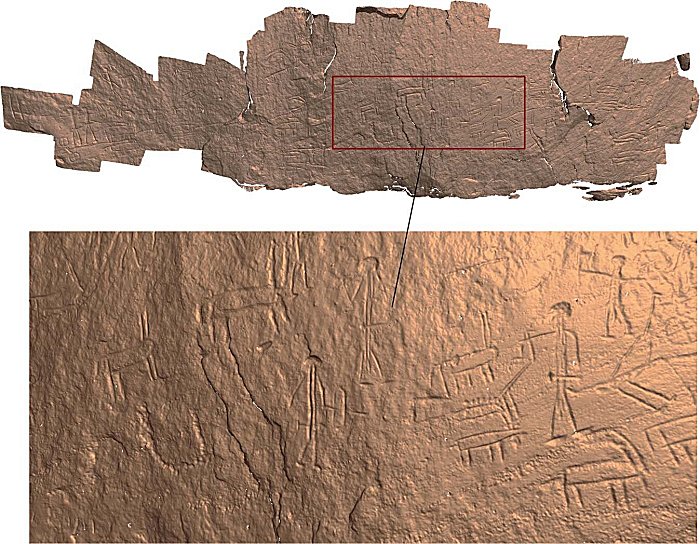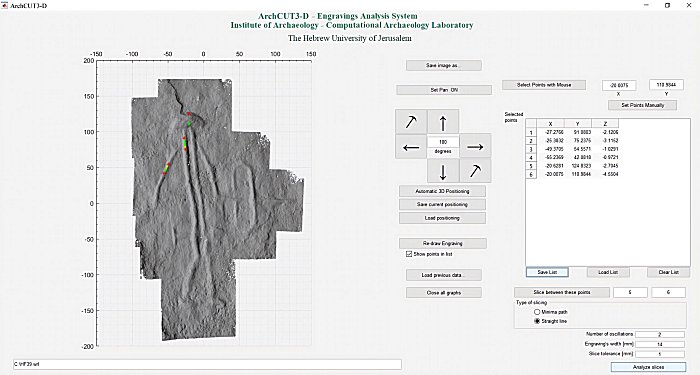Conny Waters – AncientPages.com – A groundbreaking study conducted by a multidisciplinary team that include a computational archaeologist, artist, and computer programmer has revealed new insights into ancient rock engravings and the techniques used by ancient engravers.

The Timna Park Site 25 “Chariot Engraving”. Credit: Humanities and Social Sciences Communications (2023). DOI: 10.1057/s41599-023-01742-7
The research, carried out at Site 25 in Timna Park, Southern Israel, has captivated experts and offers a fresh perspective on the production processes of these fascinating engraved rocks. The findings are published in the journal Humanities and Social Sciences Communications.
Traditionally, the study of engraved images focused on iconography, iconology, and stylistic features, overlooking the intricacies of the engraving techniques.
However, this innovative research method, introduced in the study, emphasizes characterizing the techniques employed in creating rock engravings during ancient times. By considering technological variations as indicators of the engraver’s production process, the team aims to enhance our understanding of these ancient artworks.

“Chariots Engraving” . Credit: Humanities and Social Sciences Communications (2023). DOI: 10.1057/s41599-023-01742-7
To conduct the study, 3-D scans of two ancient engravings and contemporary graffiti were obtained from Site 25 in Timna Park.
These scans underwent meticulous analysis using ArchCUT3-D, specialized software developed to ᴀssess the 3-D micromorphological characteristics of the incisions forming the engravings. ArchCUT3-D enables precise and repeatable analysis by extracting 3-D slices of the incisions and examining the surface micromorphology.
The results of the research indicate that different incisions within the engravings were executed using distinct techniques. By identifying distinctive characteristics, the team successfully showcased the unique aspects of the engraving operations, such as ergonomic conditions and the consistency level of the engraving gestures.
The utilization of ArchCUT3-D software in this study represents a significant computational advancement in the field.

ArchCUT3-D interface showing sections of sliced and analyzed incisions and a list of selected points. Credit: Humanities and Social Sciences Communications (2023). DOI: 10.1057/s41599-023-01742-7
It enables the recognition of incision techniques through micromorphology specifications and facilitates the reconstruction of engraving gestures and individual production procedures. This groundbreaking technology opens up exciting possibilities for understanding the craftsmanship and cultural significance behind ancient rock engravings.
Prof. Leore Grosman, Head of the Computational Archaeology Laboratory at the Hebrew University of Jerusalem, expressed enthusiasm for the study’s findings, stating, “Our research provides a fresh perspective on ancient rock engravings by delving into the intricacies of their production processes. By unlocking the technological secrets behind these engravings, we gain valuable insights into the craftsmanship, artistic expression, and cultural context of our ancestors.”
The implications of this study reach beyond the scientific community, as the newfound knowledge about ancient engraving techniques has the potential to reshape our understanding of human cultures throughout history. The team hopes that their findings will stimulate further research and inspire interdisciplinary collaborations to unravel the mysteries surrounding these ancient artworks.
The research team consisted of Prof. Leore Grosman, Head of the Computational Archaeology Laboratory, Lena Dubinsky, a doctoral candidate, and Dr. Marcelo David, all from the Hebrew University of Jerusalem.
Paper
Written by Conny Waters – AncientPages.com Staff Writer





